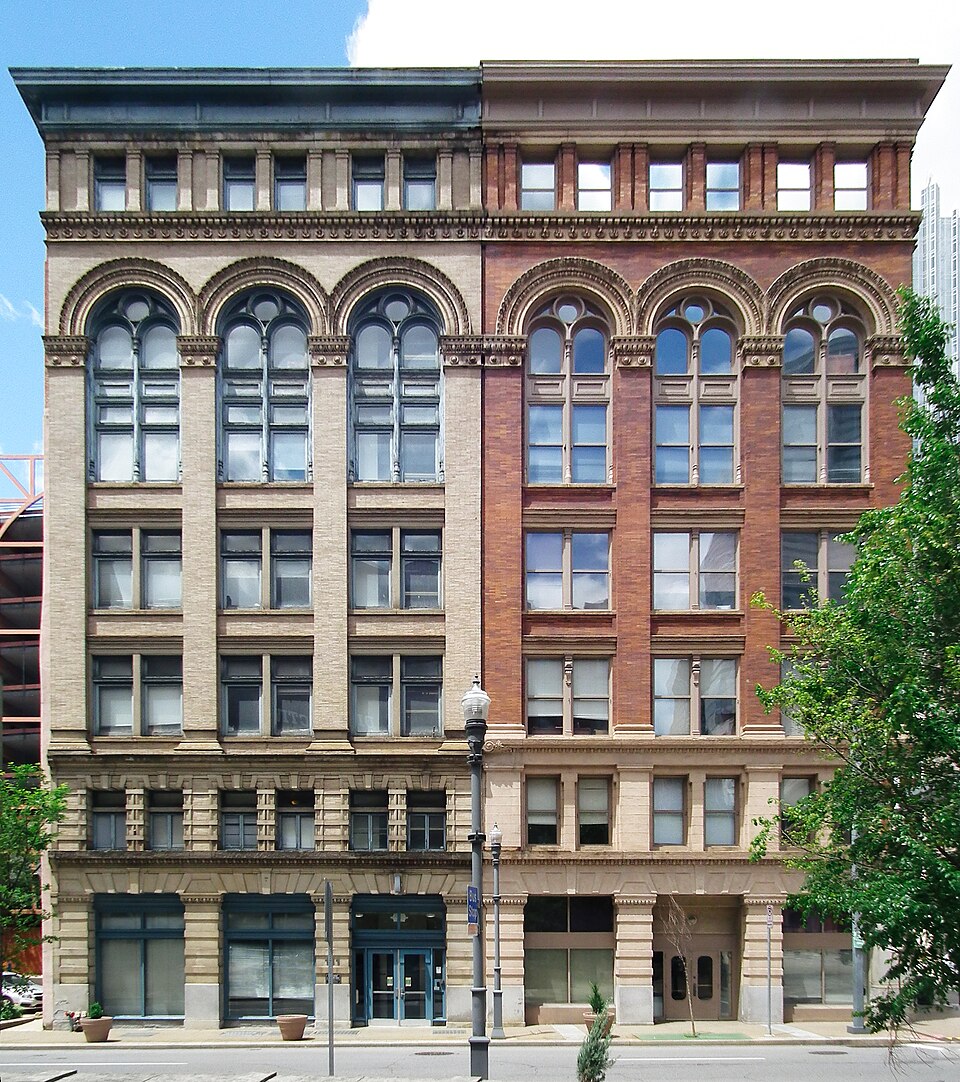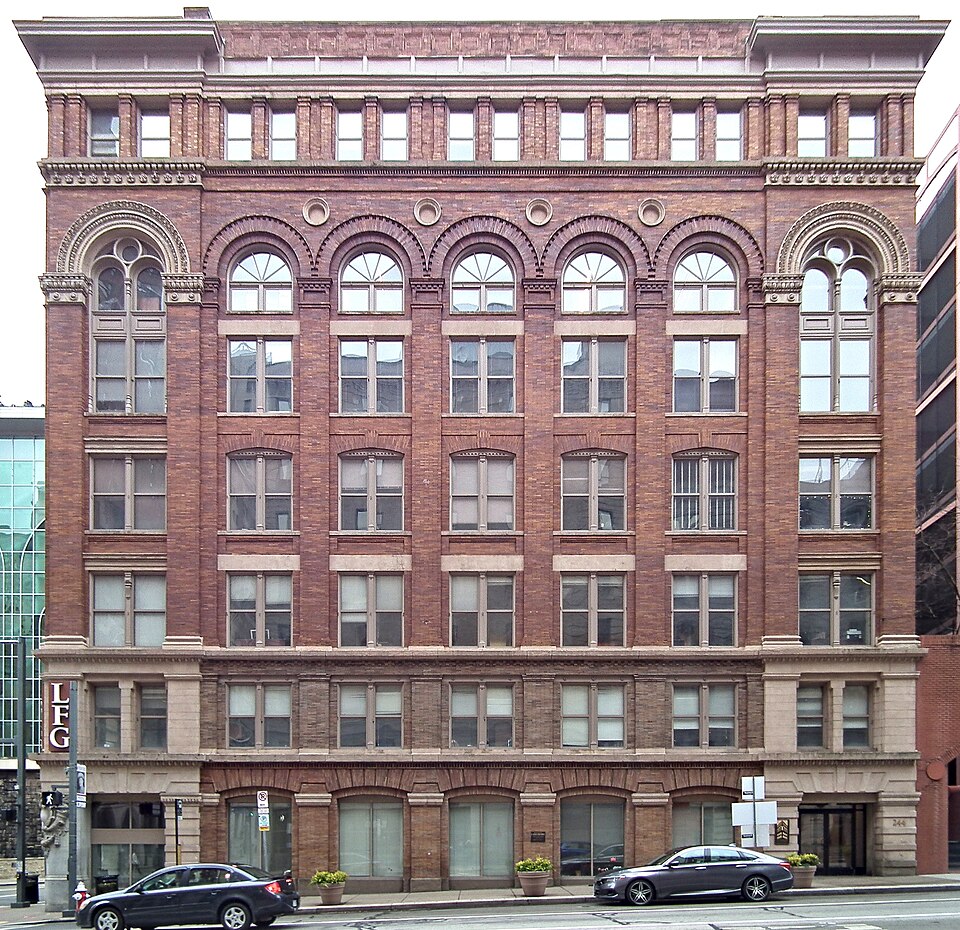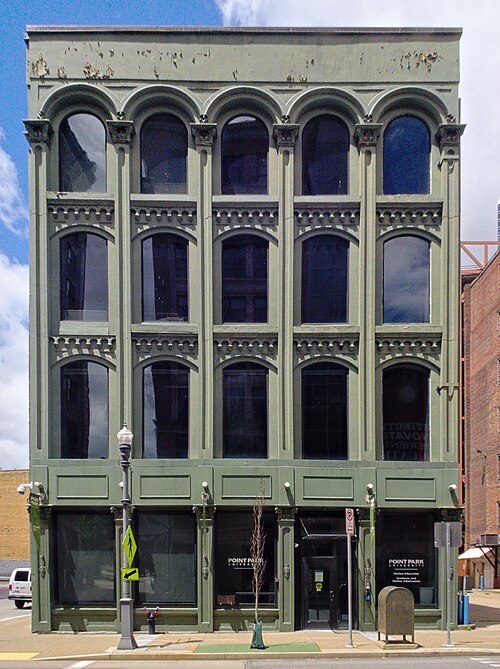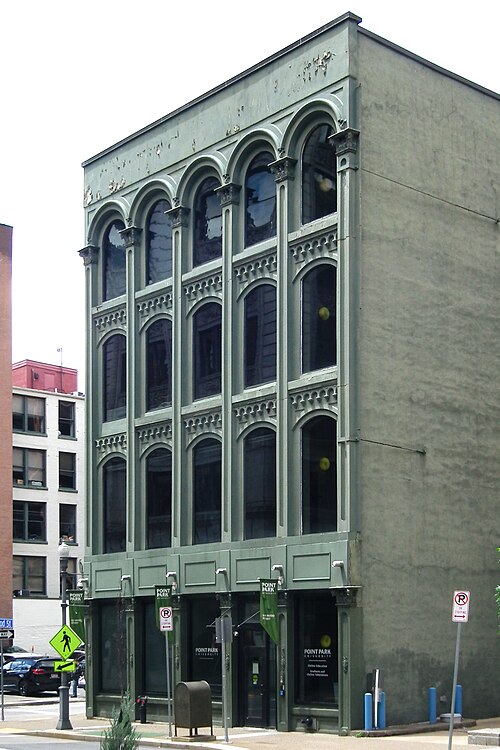
The Skinny Building, possibly the world’s narrowest commercial building, has returned to its roots as a lunch counter.


Comments

The Skinny Building, possibly the world’s narrowest commercial building, has returned to its roots as a lunch counter.



Perhaps you have wondered, as you walked down Wood Street, what “Fint-x” was, whose prominent sign mostly reappeared a few years ago after having been covered for a long while.
Fintex was a men’s clothing shop founded by Morry Goldman, noted Pittsburgh haberdasher. In its heyday, Fintex had multiple locations and advertised high style at low prices.

In the 1950s, Fintex expanded into the suburbs: here we see the announcement of a new store at the Great Southern shopping center in Bridgeville.

Morry Goldman was the sponsor of a pro basketball team called the Pittsburgh Morrys, and a glance at their Wikipedia article will take you back to a lost age of small-time professional sports of which most modern sports fans have no notion.

This building on Wood Street, right across from the subway station, was probably put up in the 1880s; it appears on an 1890 map as belonging to Jonathan D. Thompson, and in 1923 still belonged to J. D. Thompson. The elaborate stone front is liberally decorated with incised patterns. We would call the style Italianate; the architect probably thought of it as Italian Renaissance.
Update: Note the comment from “Camerafiend” below, which gives us news clippings to show us that this building was designed by E. M. Butz and built in 1874. E. M. Butz is perhaps most famous as the architect of the Western Penitentiary.


Two nearly identical buildings side by side on Wood Street, both built around the turn of the twentieth century for the Hartje Brothers, a big paper company. Charles Bickel was the architect, and here he compressed the usual American skyscraper formula of base-shaft-cap into seven floors.
The corner building has a long front on the Boulevard of the Allies; we saw it about a year and a half ago, but here is the same picture again.

A short time after these buildings went up, the Hartje Brothers called on Bickel again to design a twelve-storey skyscraper a block away at Wood Street and First Avenue, which we have used as a textbook example of the Beaux Arts skyscraper.

A well-preserved cast-iron front, though the building has lost its hat. Father Pitt would probably paint it a different color.


“One of the most handsome modern structures in Pittsburgh, this building is oriented inward, with a blank wall on each street facade above the ground floor windows.” So said James D. Van Trump in “The Stones of Pittsburgh,” and Father Pitt defers to Mr. Van Trump’s superior taste. The wedge-shaped sign above the entrance is a relatively new addition, put up in 2016, but it fits well with the spare modernism of the rest of the building. The architects were Skidmore, Owings & Merrill, one of the biggest firms in the business and most famous for supertall buildings like the Sears Tower and the Burj Khalifa.

The Tower at PNC Plaza will be ten years old this year. It occurred to Father Pitt that he had enough pictures in his collection to make up a visual story of the construction of the building, so here they are. Above, the progress as of February 18, 2014.

June 27, 2014, before the construction of the cap began.

August 29, 2014.

March 2, 2015.

March 10, 2015, with bonus bus coming toward you.

March 17, 2015.

June 13, 2015.

September 10, 2015, just a few weeks before opening.

The completed tower on November 12, 2020.

Only nine years ago, the Skinny Building was restored—the upper floors, at any rate. The ground floor was linked with the building next door as part of a convenience store with an unattractive modern front. Now the building has been thoroughly re-restored, along with its neighbor the Roberts Jewelry building, and both have been given individual ground-floor treatments more in sympathy with their upper floors. PNC, which now owns both buildings, has made good on its pledge to restore them and display art in the upper floors of the Skinny Building.


Sometimes the false is truer than the true. It is not possible to get a good picture of One PNC Plaza from the ground. The only way to get in the whole building—well, almost the whole building—was to stitch together multiple pictures, which produced a hideously distorted perspective. To create a rendering that looks more like what we perceive (which is not the same as what we see) when we look at the building, old Pa Pitt resorted to complicated trickery for the picture above, making four vertical slices of the picture and adjusting each one of them separately. If you look at the ground level, you can see how everything else has been broken and distorted to make the building look more like itself.

Here is the base of the building without the radical distortions.
One PNC Plaza was designed by Welton Becket and Associates; it opened in 1972. Mr. Becket died at the beginning of 1969; but it is probable that he left drawings of this building on his drafting table, since it had been planned before 1968. The firm continued under his name long after his death; One Mellon Center, which opened in 1980, was also designed by Welton Becket and Associates.
It is a curious fact that One PNC Plaza replaced another skyscraper that was shorter by only four floors: the First National Bank Building, which was designed by Daniel Burnham and ranks at number 35 on Wikipedia’s “List of tallest voluntarily demolished buildings.” It is the tallest building destroyed in Pittsburgh so far.


The Wood Street end of the Granite Building in a composite photograph that gets a little fuzzy toward the top, but otherwise gives us a good notion of the design of the Romanesque extravaganza. It was built in 1889 as the German National Bank; the architects were Bickel & Brennan—the Bickel being Charles Bickel, who would go one to become Pittsburgh’s most prolific architect of commercial buildings.
We also have pictures of some of Achille Giammartini’s carvings on the building, and of the German National Bank ghost signs still visible on the side that faces Liberty Avenue.